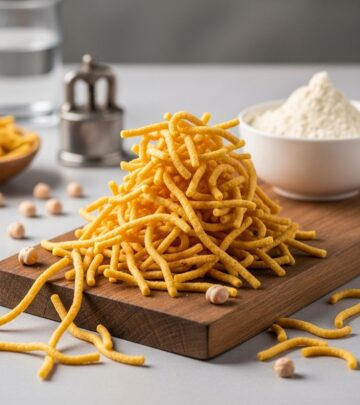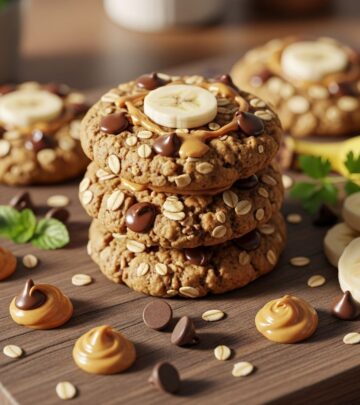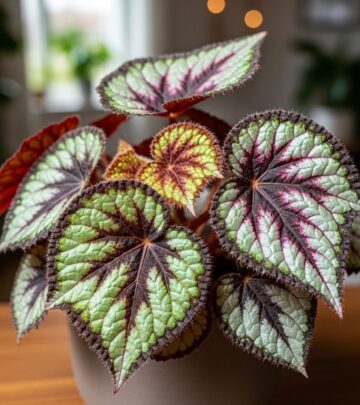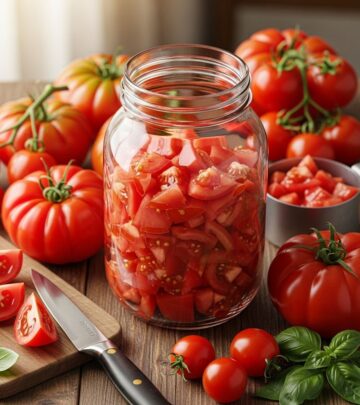Basket Plant Care: Expert Tips For Lush Trailing Growth
Master the art of growing Callisia fragrans—the versatile basket plant—indoors or out, from care tips to medicinal uses.

Image: HearthJunction Design Team
Callisia Fragrans: The Beautiful and Practical Basket Plant
Callisia fragrans, widely known as the basket plant, is a subtropical species renowned for its versatility, resilience, and medicinal value. With its lush, arching foliage and fragrant, star-shaped flowers, Callisia fragrans is a favorite among plant enthusiasts, beginners, and practitioners of traditional medicine alike. This comprehensive guide explores everything you need to know about growing, caring for, and utilizing this ornamental wonder.
What Is Callisia Fragrans?
Callisia fragrans is a perennial herb native to Mexico, the West Indies, and parts of the United States. Since its introduction into cultivation in the early 20th century, it has become a popular houseplant and garden ground cover in tropical and subtropical climates. Its common name, the basket plant, hints at its cascading growth habit, making it ideal for hanging baskets or trailing over the edges of planters.
- Scientific name: Callisia fragrans (Lindl.) Woodson
- Family: Commelinaceae
- Growth habit: Clumping with trailing stems; prolific at forming new plantlets
- Leaf characteristics: Large, dark green, slightly succulent leaves that may take on a purple hue in bright sunlight
- Indoor/outdoor use: Versatile as a houseplant, basket specimen, or outdoor ground cover in mild climates
Highlights and Benefits of the Basket Plant
The basket plant is more than just a pretty face. Here are some of its most notable attributes:
- Beginner-friendly: Tolerates a range of conditions and recovers quickly from neglect
- Fast-growing: Produces new stems and roots with remarkable speed, making it easy to propagate
- Medicinal uses: Employed in folk medicine for burns, toothache, arthritis, and even cardiovascular support
- Air-purifying: Like many houseplants, it can help improve indoor air quality
- Aromatic blooms: Delicate white blooms offer a subtle, sweet fragrance during spring and summer
Origins and Distribution
Callisia fragrans is found natively in:
- Mexico
- West Indies
- Southern United States
- It has also become established as a cultivated ornamental in tropical and subtropical regions worldwide.
Ideal Growing Conditions
Basket plants flourish under the right conditions but are adaptable enough to thrive in less-than-perfect settings.
Light
- Indoors: Prefers bright, indirect light but can tolerate low to medium light conditions. Too much direct sunlight may cause leaf scorching, while higher light intensifies purple leaf coloration.
- Outdoors: Best in lightly shaded locations; avoid strong, unfiltered afternoon sun.
Temperature
- Best between 60–80°F (16–27°C).
- Protect from frost; can be grown year-round indoors or moved outside in mild climates for summer.
Humidity
- Enjoys moderate humidity.
- Will cope with average home humidity levels but thrives with an occasional misting if air is especially dry.
Soil
- Prefers a well-draining, fertile potting mix. A standard indoor plant blend with some added perlite or sand works well.
- Can be grown hydroponically or in moist garden beds in frost-free regions.
Water
- Likes evenly moist soil; water when the top inch is dry.
- Reduce watering during winter dormancy. Avoid letting the plant sit in soggy soil, which may cause root rot.
- In very hot climates, water every 2–3 days; otherwise, weekly watering suffices.
Types and Varieties
- Callisia fragrans (standard): Classic dark green foliage that may flush purple in strong light.
- Callisia fragrans ‘Melnikoff’: A variant with especially attractive, variegated or striped leaves.
How to Grow Callisia Fragrans
Propagation
Propagation is one of the basket plant’s most exciting features. The plant naturally sends out runners or stolons that root wherever they touch moist soil, forming dense colonies over time.
- Take a healthy stem cutting (preferably one with air roots).
- Place the cutting in moist potting mix or water until roots form.
- Space the base so the stem is planted just deep enough for the roots to settle but leaves remain above the soil.
- New plants often root within a few weeks and can be separated and potted individually or left to form a thick, trailing mass.
Potting and Repotting
- Due to rapid growth, repot annually in spring. Use a container with good drainage and enough room for spreading roots.
- Refresh soil with each repotting to keep plants vigorous and prevent compaction.
Blooming: Timing, Appearance, and Scent
- Bloom Window: Typically from March to October.
- Appearance: Small, star-shaped white flowers in loose clusters atop arching stems.
- Fragrance: Sweet and noticeable, especially in close quarters.
- Boosting blooms: Feed with a balanced fertilizer for flowering plants during the growing season for best results.
Pruning and Maintenance
- Minimal pruning required—trim stems to keep the plant to the desired size or encourage bushier growth.
- Remove dead or discolored leaves to maintain appearance.
- Cut trimmed stems can be used for propagation.
Fertilizing Tips
- Feed monthly during spring and summer using a liquid fertilizer suitable for houseplants or flowering plants.
- Cease or reduce feeding during fall and winter when growth slows.
- Biofertilizers have shown promise for boosting Callisia fragrans growth, particularly in hydroponic systems.
Medicinal and Folk Uses
Callisia fragrans holds a prominent place in traditional medicine, especially in regions where it is native and naturalized.
- Used to treat burns, wounds, arthritis, cardiovascular conditions, and even pre-gastric cancer.
- Commonly prepared as decoctions, infusions, tinctures, oils, and ointments.
- Offers both internal and external benefits according to folk practice, though scientific research is ongoing.
One study in rats found that extracts of Callisia fragrans had positive effects on blood pressure and heart parameters, supporting some of its traditional uses. However, always consult a healthcare provider before using any plant medicinally.
Common Problems and Solutions
- Yellowing leaves: Often due to overwatering or poor drainage. Let soil dry slightly between waterings.
- Leaf scorch: Caused by intense direct sun. Move to a location with filtered or indirect light.
- Leggy growth: Insufficient light. Place closer to a light source or use a grow light indoors.
- Pests: Rare, but may attract mealybugs, aphids, or spider mites. Treat infestations with insecticidal soap.
Potting and Repotting
- Repot basket plant every year or when roots outgrow their container.
- Choose a new pot 1–2 inches larger in diameter to allow for growth.
- Use fresh, fertile potting mix to promote healthy root development.
- Water thoroughly after repotting.
Using Callisia Fragrans in Your Home or Garden
- Hanging baskets: Take advantage of trailing growth to create a lush, cascading effect.
- Tabletop display: Regular pruning keeps Callisia fragrans compact for use as a desktop or side table accent.
- Ground cover: In frost-free climates, forms a dense, weed-suppressing mat in semi-shaded beds.
- Companion plant: Combines well with other subtropical houseplants for a jungle effect.
Table: At a Glance – Basket Plant Care Summary
| Care Aspect | Recommendation |
|---|---|
| Light | Bright, indirect (indoors); partial shade (outdoors) |
| Water | Moderate; allow top inch of soil to dry |
| Humidity | Average; occasional misting appreciated |
| Fertilizer | Monthly in growing season; none in winter |
| Bloom Time | March to October |
| Propagation | Stem cuttings, runners |
| Toxicity | Generally considered safe; handle medicinal use with care |
Frequently Asked Questions (FAQs)
Q: How often should I water my Callisia fragrans?
A: Water when the top inch of soil feels dry. In high heat, you may need to water every 2–3 days; in cooler, lower-light conditions, once a week may suffice.
Q: Is Callisia fragrans toxic to pets?
A: It is generally considered non-toxic, but as with any plant, monitor pets for adverse reactions if they chew on foliage.
Q: Why are my leaves turning purple?
A: Purple leaves are a common response to brighter light and are not usually a problem. They can also indicate a natural genetic variant or mild stress, which often improves the plant’s coloration.
Q: Can I grow Callisia fragrans outdoors?
A: Absolutely! It can be grown outdoors year-round in frost-free climates and makes an excellent ground cover. In colder areas, bring plants indoors before frost.
Q: How do I encourage blooming?
A: Use a balanced fertilizer during the growing season and ensure your plant receives enough light. Most basket plants bloom from spring through autumn.
Q: What are the main medicinal benefits?
A: In folk medicine, Callisia fragrans is used for wound healing, relief of pain and burns, and supporting cardiovascular health—but scientific evidence is still developing, so consult your doctor before use.
Conclusion
Callisia fragrans, the basket plant, is a joy for gardeners and healers alike. With minimal care, rapid growth, and a host of traditional benefits, it makes a worthy addition to any home or garden—whether for its trailing beauty, air-purifying abilities, or herbal legacy. Give it a try, and you might find yourself sharing cuttings with friends before the year is out!
References
- https://www.epicgardening.com/tradescantia-pallida/
- https://www.pinterest.com/pin/callisia-fragrans-the-beautiful-basket-plant-epic-gardening–530298924886609958/
- https://www.ffhdj.com/index.php/BioactiveCompounds/article/view/1328
- https://www.grnjournal.us/index.php/AJPMHS/article/download/2615/2256/4546
- https://www.thespruce.com/basket-plant-growing-guide-8671158
Read full bio of Srija Burman












